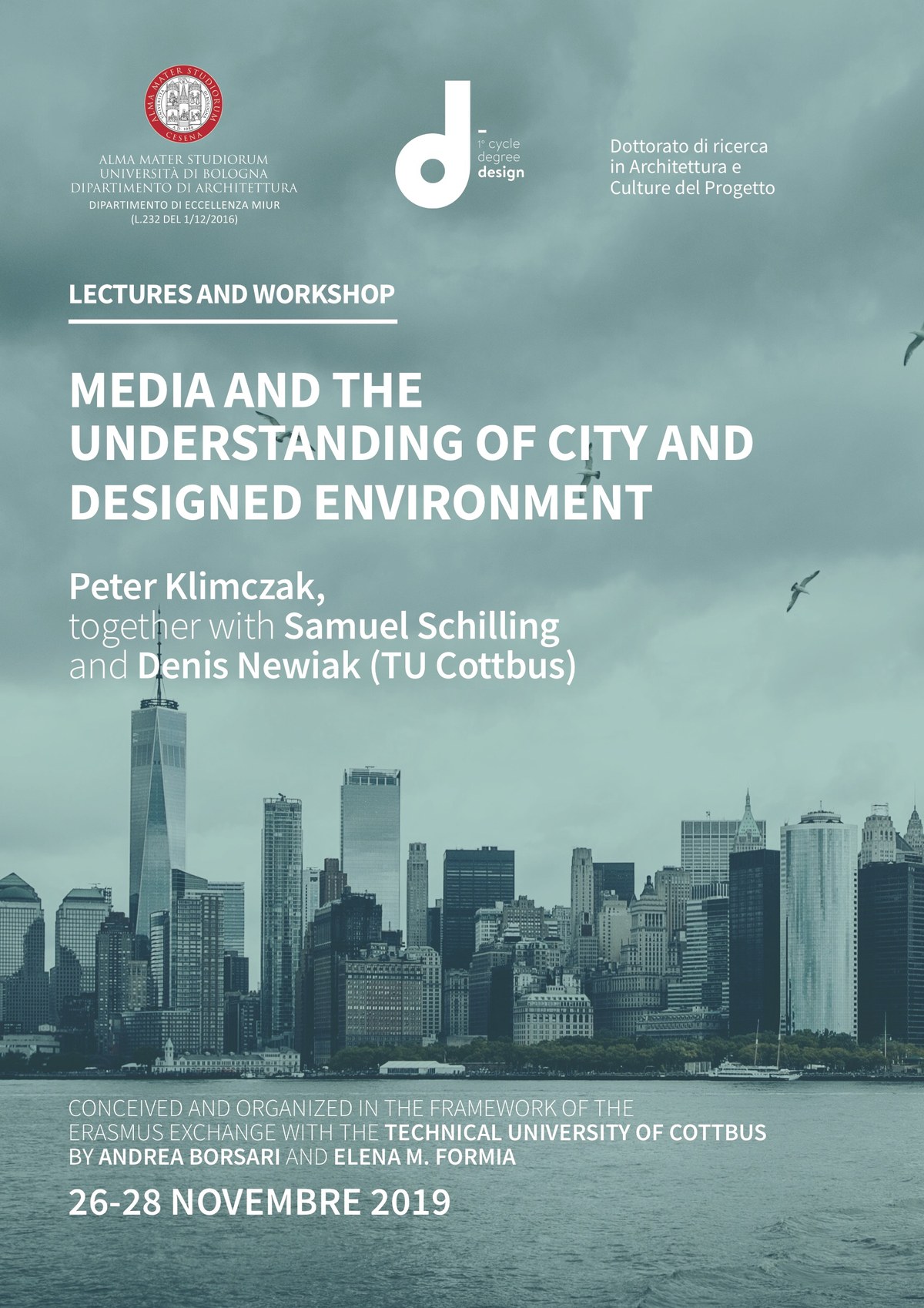Media and the Understanding of city and designed environment: Peter Klimczak, together with Samuel Schilling and Denis Newiak (TU Cottbus)
Lectures and Workshops
-
Data:
26 NOVEMBRE-28 NOVEMBRE 2019dalle 16:00 alle 12:00 -
Luogo: Viale del Risorgimento 2, Bologna
-
Tipo: Seminari

Referente: Elena Formia
Crediti: 3
“The self-referential city”
26 November, 16:00-19:00,
Viale del Risorgimento 2 Bologna, Room 3.6
The lecture focuses on the relation between the public sphere in cities, towns or urban centres, the human beings that live in these public spaces and especially the number of signs, texts and images in the public sphere that all communicate a certain message. These special kinds of communication via the medium of architecture, urban structure and the plurality of surfaces in the public sphere will be traced using the ideas of German sociologist Hans-Paul Bahrdt and a system theory of communication. Furthermore, the ideas will be applied to the concept of ‘non-places’ by Marc Augé, a French anthropologist, in order to get an idea of which signs and communicative codes in public places are able to express the identity of the place and the people living in it.
“Cinema and the understanding of designed environments”
27 November, 16:00-19:00,
Viale del Risorgimento 2 Bologna, Room 0.4
According to Elena Esposito, cinema (and especially science fiction films) can be understood as a vast repository of effective and creative attempts to deal with the challenges of the future. Indeed, sci-fi movies have created a collective consciousness of detailed imaginations of whatcity life might look and sound like in the future: the mostly dystopic, uninhabitable and lonely cities of the future comment on highly topical issues of urban life, like the increasing presence ofcomplex technologies in the urban landscape or increasing segregation and gentrification – and how to deal with them through smart city planning. By means of contemporary filmic future cities the first (and longer) part of this presentation extracts implicit and explicit filmic examples ofprogressive and innovative city planning in the anonymous megacities of tomorrow. The second(and shorter) part deals with the fundamental differences between imagined future and real past and the scientific ways of distinguishing between fictionality and factuality by means of dystopian science fiction films.
“Media and city”
28 November, 10:00-12:00,
Viale del Risorgimento 2 Bologna, Sala del Consiglio, 2nd floor
The first (and more theoretical) part focuses on the relation between the public sphere incities, towns or urban centres, the human beings that live in these public spaces and especially the number of signs, texts and images in the public sphere that all communicate a certain message. These special kinds of communication via the medium of architecture, urban structure and the plurality of surfaces in the public sphere will be traced using the ideas of German sociologist Hans-Paul Bahrdt. The second (and more practical) part extracts implicitand explicit filmic examples of progressive and innovative city planning in the anonymous megacities of tomorrow by means of contemporary filmic future cities. According to Elena Esposito, cinema (and especially science fiction films) can be understood as a vast repository of effective and creative attempts to deal with the challenges of the future.